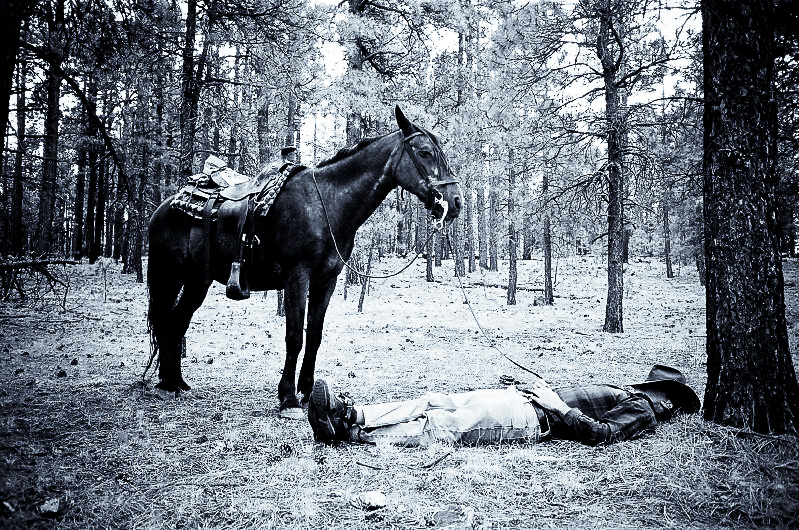
My horse, Cometa, and I nap in the middle of a long day. Photo courtesy of my wife, Ana Aragon de Miller
I have been watching other photographers, local friends mostly, as they move through their process in photography. Readers of this blog will recognize I’m particularly attracted to the creative process and how that works out psychologically. Watching my friends, and myself, struggle with the creative process in photography is endlessly fascinating for me. One struggle I have observed many of us go through is what I call, the “loss of subject matter” phase.
The process can go something like this: 1) the person gets enamored with images and image making; 2) the person becomes enamored with and buys a “good” camera; 3) they take pictures of everything and everyone; 4) eventually they get a bit better and become more selective about what they shoot; 5) they begin to grow disenchanted with their subject matter-it isn’t as interesting as it once was-it has been done before-it is old hat; 6) eventually they can feel like there isn’t anything local that they want to photograph and they need to travel to get that feeling back.
Not everyone experiences it in this way, but it is fair to say that many of us find the distant and unknown more exotic to photograph than the local and known. Henri Cartier-Bresson, that heralded pioneering photographer, once said,
“To interest people in faraway places-to shock them, delight them-is not too difficult. But the most difficult thing is in your own country. You know too much….when it’s your own block, with such a routine, it’s quite difficult to get. When it’s places I go to all the time-I know too much and not enough and to be lucid about it is the most difficult.”¹
And yet, who better to tell the local stories than those of us who live right here? Whether it is Howard County, Maryland or Albuquerque, New Mexico, or Lubbock Texas, stuff happens there, interesting stuff happens there. I will venture that if you start looking, really looking, you will find something interesting right where you are. David duChemin recently encouraged people to pass on buying new gear and put the money toward buying plane tickets. That is great advice. After all, it’s not in the gear that you will find great images. But it is also not really in photographing more exotic places that you will become a better photographer. Becoming a better photographer happens by seeing with newer and better eyes, and using the camera at hand to depict your vision of what is presented before you. What better place to start than in your own town?
Cartier-Bresson, in the quote above, said he knew “too much and not enough” about the places with which he was familiar. I know it is the same for me. How about you? What if we were to get curious about where we live? Can we really effectively tell the stories of distant lands when we cannot see and tell the stories of our own land?
What is it you don’t know enough about in your neck of the woods? What stories are there that are just begging to be told? Explore what you know about where you live and go deeper than you’ve gone before; explore what you do not know. Challenge your assumptions about your environment (yes, you do have them!) and look deeper at the people living there, their habits, their customs, their celebrations, their losses. What draws you in? What repels you? Provided you will be safe enough, can you explore those subjects that give you a negative reaction as well as those that you are attracted to? There is a landscape, a people (or several), a history, a culture, nature, in everyone’s home town; what is the visual story of that place.
Turn around, get curious about the place you live. It is fine to long for travel and adventure but, if you’re anything like me, you’ll spend most of your days at home. And I believe that is an interesting place. You are more qualified to tell that story than I am as I just past through and skim the surface.
PS. I got totally jazzed about photographing where I live after I started thinking in this way and, wouldn’t you know it, opportunities have begun presenting themselves to me. So, I’ve got a fun one in the works that I hope turns out. Stay tuned. I don’t want to give anything away but I’m really jazzed to photograph this.
PPS. Oh, and for some additional help with making photographs “close to home” check out Stuart Sipahigil’s wonderful ebook. Aptly titled “Close to Home”, it is available for purchase through the good folks at Craft & Vision.
¹. This quote is taken from this video featuring Henri Cartier-Bresson’s work and comments on it that was up on vimeo for a while but has since been taken down. The DVD is available on www.icp.org. The direct link to the video store page is here.
